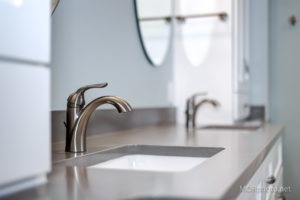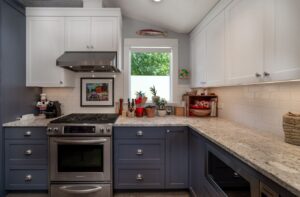Whether you have remodeled many bathrooms, or are taking on your very first project, this guide will help you refine your understanding of the remodel process and allow you to better communicate your expectations to your contractor.
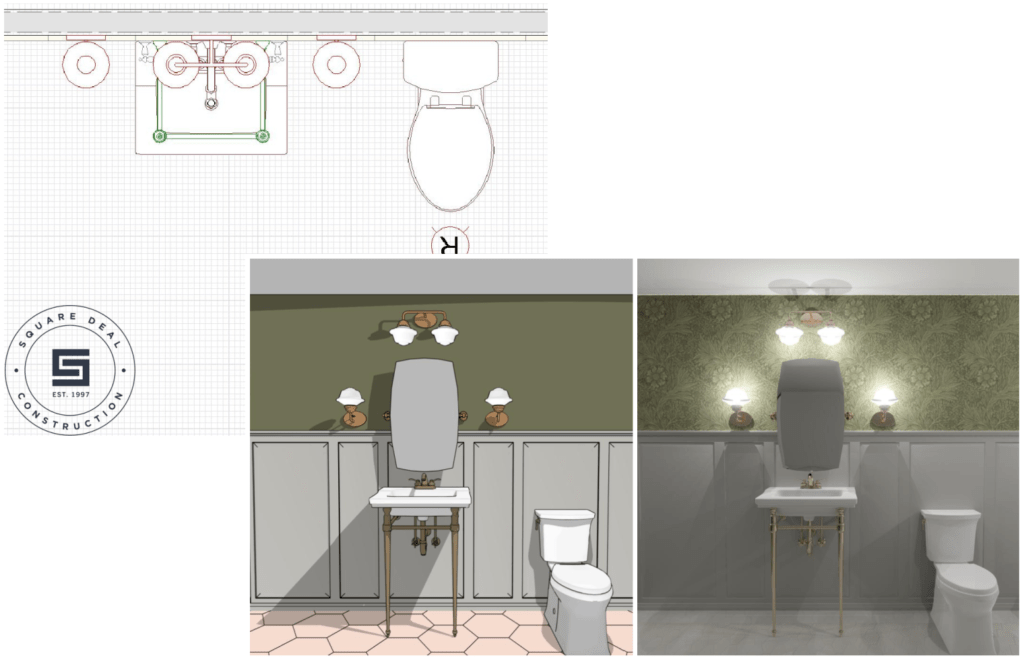
1. Identify the Problem
Maybe the anxious dislike of your bathroom has been there since day one, or maybe it’s been slowly festering the last couple years. It’s not always easy to figure out where to start, whether it’s too small, has outdated fixtures, or just doesn’t reflect you . Set aside some time to go through your bathroom routine. Where do you have the biggest problems? What causes you the most stress?
Knowing what doesn’t work for you in your bathroom will help decide what will work. Restrooms should be just that, restful, as well as functional.
2. Gather Inspiration
Do yourself a favor and sign up for Pinterest or Houzz. Start a new inspiration board specifically for this project. Search for bathroom photos. Look at different styles and layouts. Save the ones you like or that inspire you.
Once you’ve got at least 50 inspiration pictures saved, go back through them and decide what they have in common.
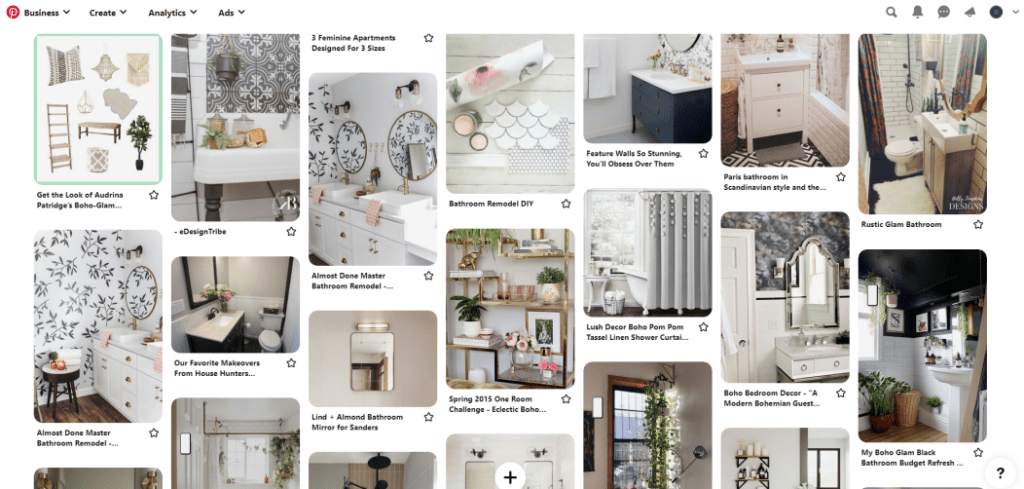
For example, if you look at the Pinterest board I started with my sister for our bathroom remodel, you’d notice there are a lot of layout & storage tips for small bathrooms. The colors are mostly warm neutrals. Many of the pictures have plants. Subway tile pops up several times. And black & gold hardware are common themes as well. From these 144 pins, I can tell that we’re going to want a mostly white bathroom, with a stained wood vanity, subway tile on the walls around our tub, and a shelf or hanger for plants. I also know that we have a small bathroom, so maximizing storage is an absolute must. And we’ll probably want a shower curtain with a floral motif.
From here, I can narrow down my inspiration board to a handful of photos (no more than 10), and get ready to use that inspiration to figure out exactly what this bathroom is going to look like when we’re done.
PRO TIP: Pick design elements that you know you won't get tired of. Yes, that peach colored tile is absolutely beautiful, but it's also trendy. Are you going to love it 5 or 10 years from now? You can always change the shower curtain or the linens to reflect what trends you currently enjoy - and you can easily change them without tearing open a wall or spending $10,000.
3. Determine Priorities
Let’s face it: your budget probably won’t let you get everything you want. Decide what is an absolute must for your remodel, and what is a “would be nice to have, but only if budget allows.” Create a list. Yes, actually sit down and write it out. Two columns: Needs & Wants. Go through your inspiration and decide what your remodel absolutely has to have. Prioritize the things you want, so that, if you are able to add a couple of them in, you know which ones you want to add. You are going to use this list to help your contractor figure out exactly what they can do for you that fits within your budget.
4. Determine Budget
How will you be paying for your remodel? Do you have some savings set aside? Will you be financing? However you intend to cover the costs, determine the maximum budget for your project. Remember to set aside 5-10% of the total cost for incidentals. You may open a wall and discover it’s full of rot. Make sure you can cover the cost of these unexpected repairs.
From here, you should do some “price conditioning.” We’ve all seen the shows on HGTV and think we know what a remodel will cost. The reality is never what they show on TV. (Ironic, isn’t it?) Unfortunately, that show is probably filmed in an area where real estate and labor costs are significantly cheaper than they are here in the Portland area. And the odds that the contractors are not charging the homeowners their normal fees are high, because they’re being paid to be on TV. So take those ideas with a grain of salt, and prepare to learn what your project will really cost.
One of the absolute best resources for figuring out what your project will potentially cost is Remodeling Magazine’s annual Cost vs. Value Report. It will give you national averages, regional averages, and specific cities. Plus, not only will it give you an estimate of what your project will cost, it will also tell you approximately how much of that cost you can expect to get back in the upgraded value of your home. For example, a midrange bathroom remodel in 2021 in the 97132 zip code area (Newberg, Oregon) cost on average $24,000+ , and the average cost recoup was 49.4%.
A quick Google search of phrases like, “how much will tiling my shower cost” yields millions of results. (Although they may not be accurate to my area of the world.)
If costs from the Cost vs. Value Report and/or Google search results are within your budget, then you are ready to move on to the next step: interviewing contractors. If costs are higher than you can currently afford, perhaps it’s time to go back to step #3 and revise your needs and wants.
PRO TIP: Labor can easily be up to 50% of your project cost, if not more. Don't forget, you get what you pay for - good labor isn't cheap, and cheap labor isn't good.
5. Find a Professional
There are several different kinds of professionals that may be able to help you with your bathroom remodel:
- Architects
- Pros: They develop concepts, and then create build plans that are ready to be turned into the Building Department for permits.
- Cons: You’ll have to find someone else to actually do the construction work and they don’t usually have a great idea of actual construction costs, so you may end up with some beautiful designs that cost twice as much as you can spend.
- Interior Designers
- Pros: They’ll have a wealth of knowledge and ideas. They can sometimes get you discounts on furniture and materials. They can usually recommend a great contractor/handyman/woodworker/etc.
- Cons: They usually can’t provide you with plans you can take to the Building Department, especially if there is any structural work being done (i.e. moving walls). And again, they don’t do any of the actual construction work and they aren’t as familiar with construction costs.
- General Contractors
- Pros: They’ll oversee your project from start to completion, do all of the construction work, manage any tradesmen (e.g. plumbers and electricians), and take care of all of the building permits. They will save you a lot of time and stress (if they are doing their job right – check out our guide to choosing a contractor).
- Cons: They don’t know as much about design and usually can’t provide you with any sort of visual renderings of what your finished space will look like.
- Design-Build Firms
- Pros: They have architects and/or designers on staff, as well as operating as a general contractor, so you get the best of both worlds: someone who can work with you from initial concept, to finalizing plans, to permitting, to demo, to a finished bathroom. The architect and designer work with the project manager from the very beginning to design something that fits within your budget and will make sense to build. Design-build firms are essentially one-stop-shopping.
- Cons: Picking a team could be difficult if you like the designer at one place, but don’t get along with the project manager, or vice versa.
Once you’ve decided on the type of help you want to enlist, it’s time to research the companies in your area that offer the services you’re looking for. We cannot overstate how important it is to read the reviews, ask for previous client references (& actually talk to them), and make sure you are going to be able to trust the company you pick. Remodels can take anywhere from two months to a year, including the design phase. You want to make sure you’re going to enjoy working with the people you pick for the duration of the project.
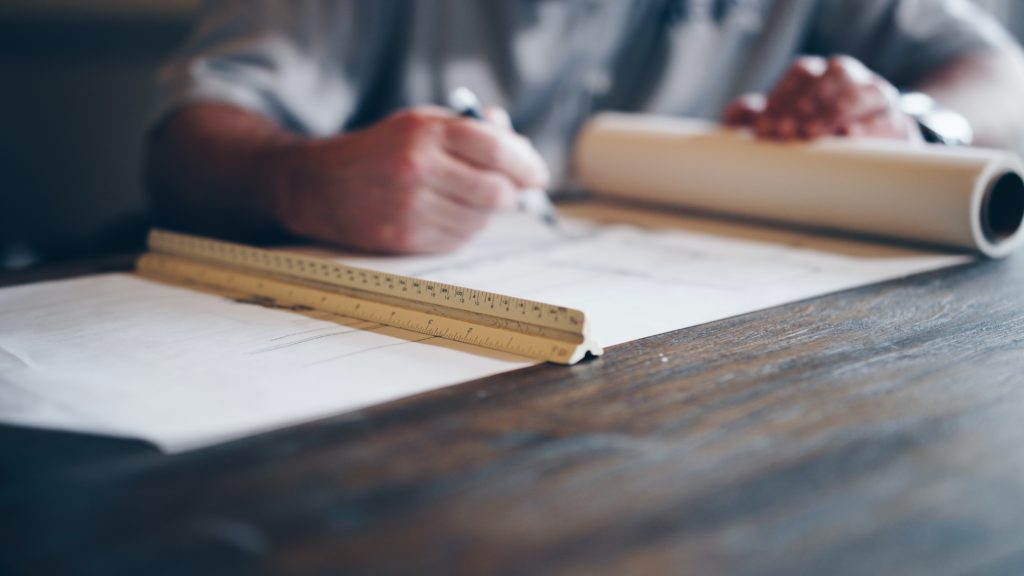
6. Define the Scope
Sit down with your designer/architect/contractor/builder and really define the scope of the project. Figure out exactly what will be included and what will not be. Determine who is providing what and when. Nail down all of the details. The more you can finalize before you actually start construction the project, the better. This will help you avoid any unnecessary stoppage of work, which can get expensive and frustrating.
7. Picking Materials
Refer back to your design inspiration because it’s time to finalize all of your materials, fixtures, and finishes.
Consider the time and effort you’ll need to put into the maintenance to keep them in good condition. Consider the warranty. Consider the shipping time! Ask your pros for advice. They should be able to tell you what products are going to hold up better and what products are not worth the box they come in.
Decide on as much as you possibly can prior to signing contracts and starting work. This will also help you know exactly what your project will cost so there won’t be any unexpected upgrade charges.
PRO TIP: Don't rely on pictures online to make your final decisions. Look at physical samples of the finishes you are considering in your actual bathroom space. The lighting in your bathroom could make a gray paint color look green, when it looks blue on your computer. That countertop you thought looked gorgeous in the showroom may not look nearly as beautiful in the lighting of your bathroom.
BONUS TIP: If you can, choose lighting for your bathroom that is at least 3500K on the color temperature scale, at least 75 on the color rendering index (CRI), and about 70-80 Lumens per square foot of bathroom space. This will help you get a bright, natural, consistent light in your bathroom - which is especially important for those of us that apply our makeup in there.
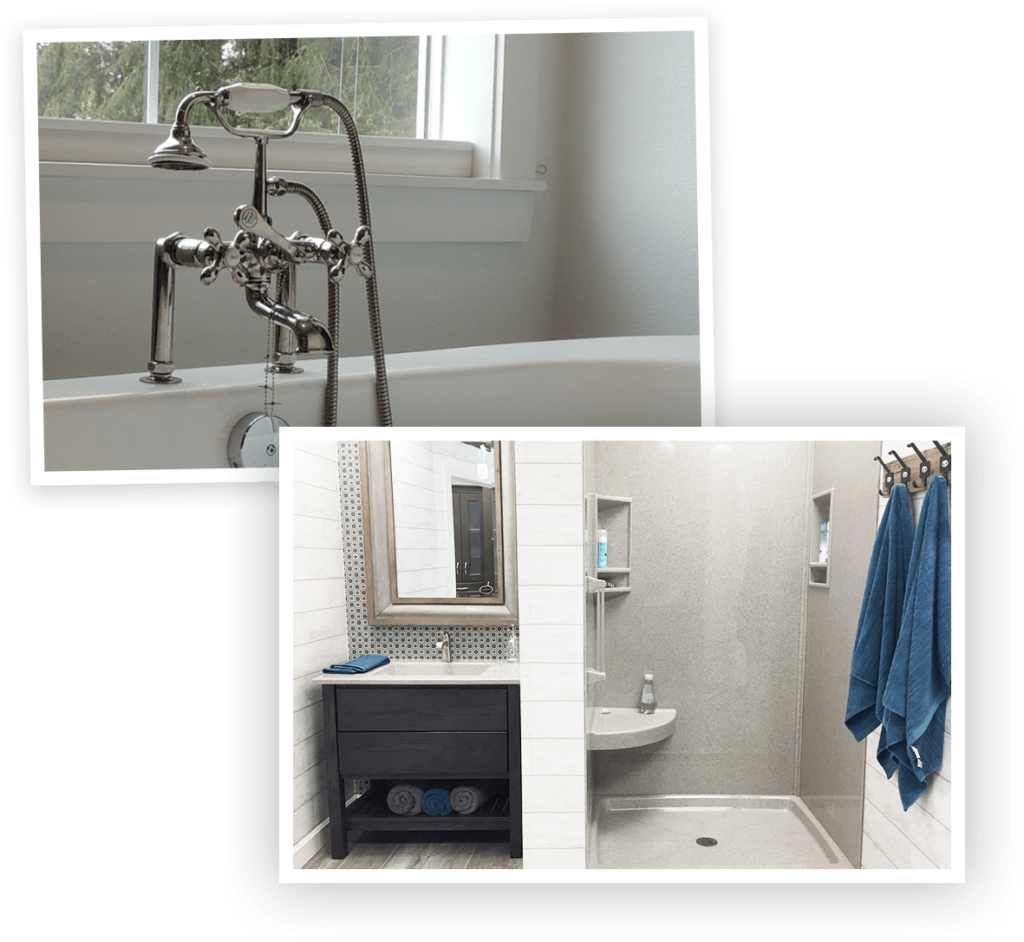
8. Signing Contracts
Once you’ve nailed down all the details, it’s time to sign the construction contracts so your builder can start pre-production. It can easily take up to a month to get all of your materials ordered and delivered, and material arrival will affect when your project can actually start.
You’ll also want to consider the timing of your project. For example, if you typically host during the holidays, you probably don’t want to have your bathroom torn up when you’ve got guests over. Or, if you plan on going away on vacation, and you trust your contractor, you can schedule construction for while you are gone so you don’t have to live in the mess. (One of our clients likes to say that construction dust is the unofficial ninth Biblical plague. We don’t disagree.)
9. Move Out
Whether you’re planning to live away from home during the renovation, or just temporarily moving to a different bathroom, you’ll need to move all of your personal items out of the space. And you’ll probably want to put them somewhere they are easily accessible for daily use, not just in a storage box in the guest room. You’ll also want to temporarily move any large furniture between the exterior door & the bathroom so there is an unobstructed path between the bathroom & the outside of the house. Your contractor should set up containment prior to demo that will help keep dust and debris contained. The easier you can make it for them to set up containment, the quicker they can do their job.
PRO TIP: Consider factoring alternative accommodations into your remodeling budget if you plan to stay elsewhere while work is being done on your home. It's definitely easier to live on site during a bathroom remodel than it is to live on site during a kitchen or whole home remodel. But if you only have one bathroom, you're going to need to bathe somewhere.
10. Get Building
Now it’s time for the fun part – demo!


